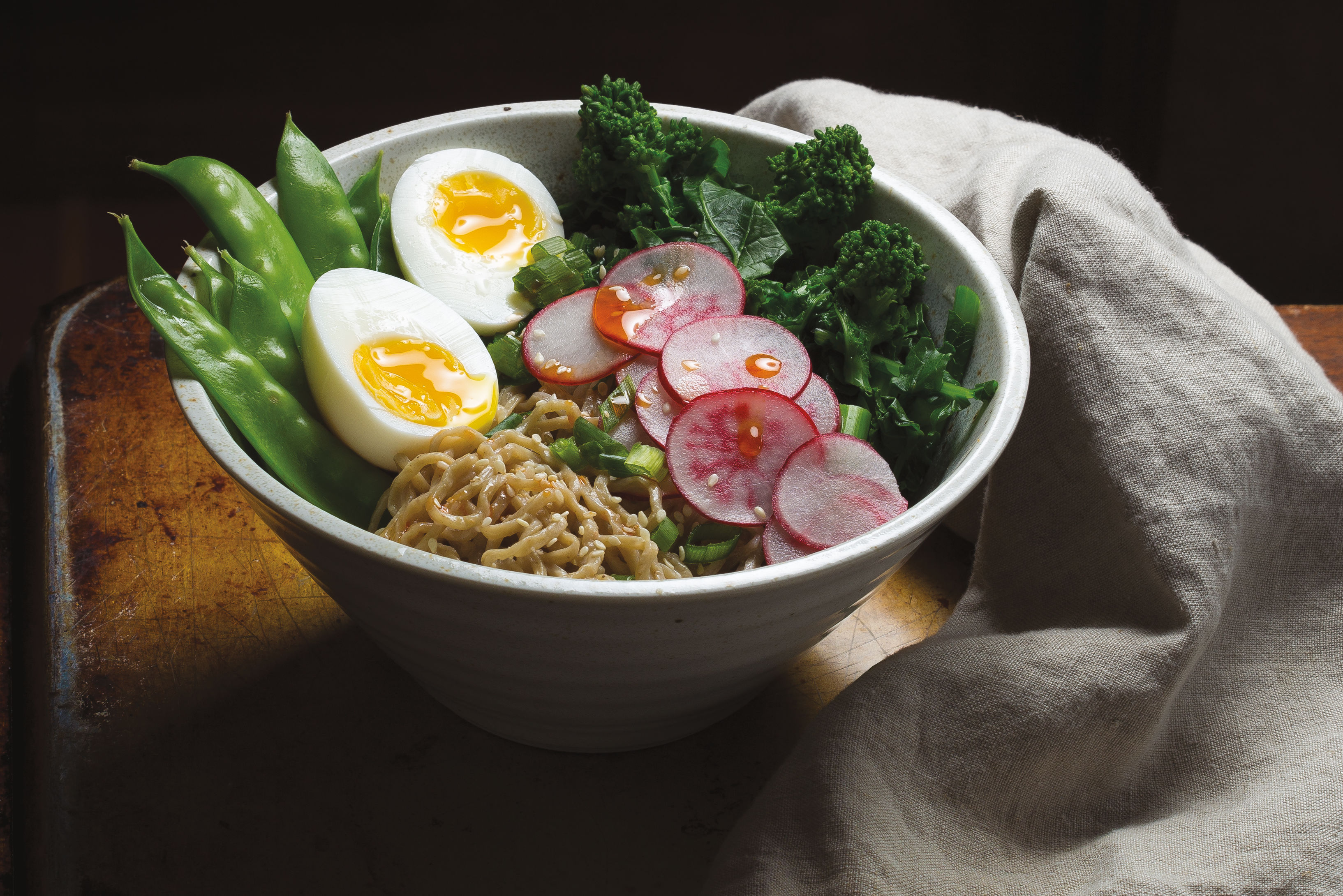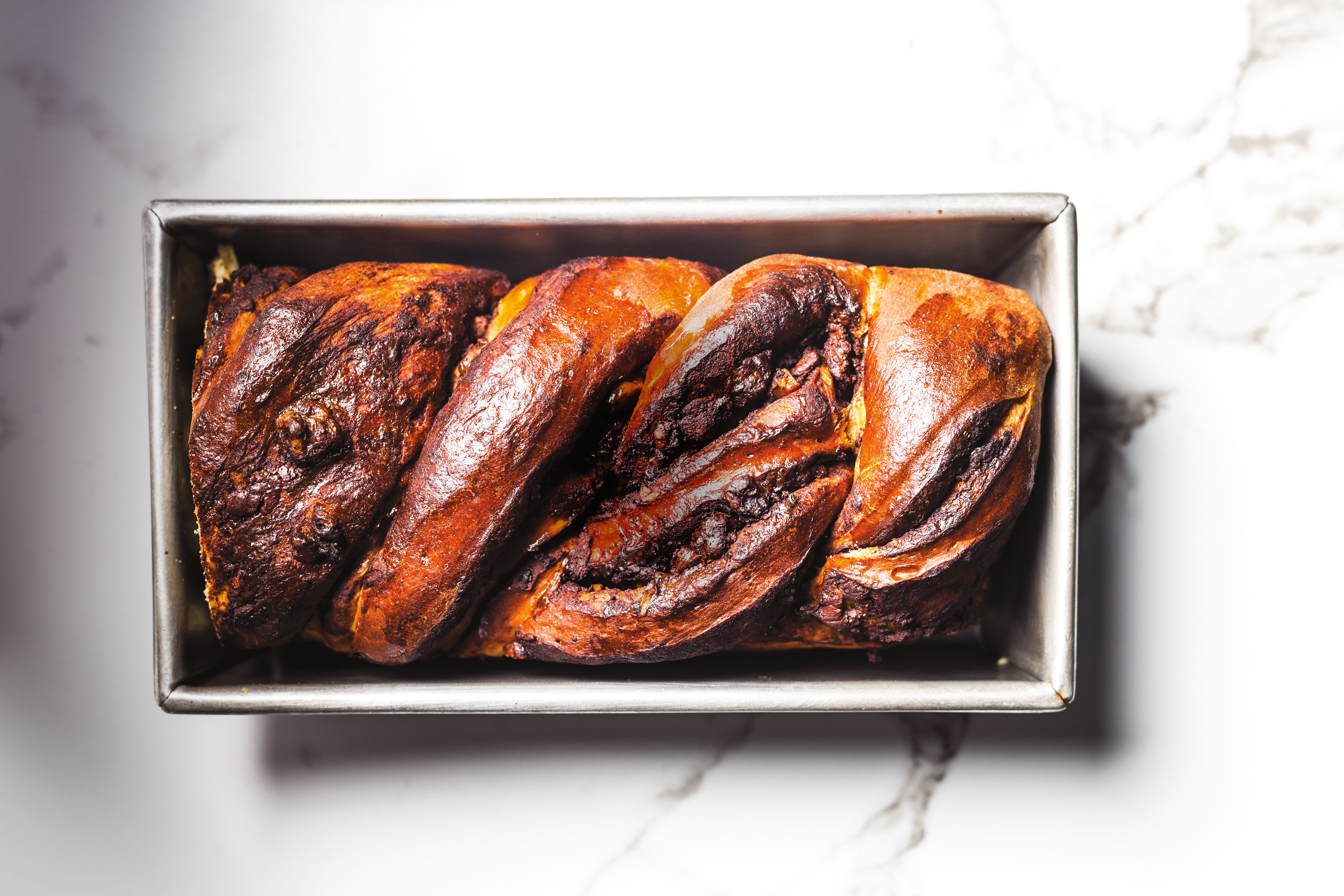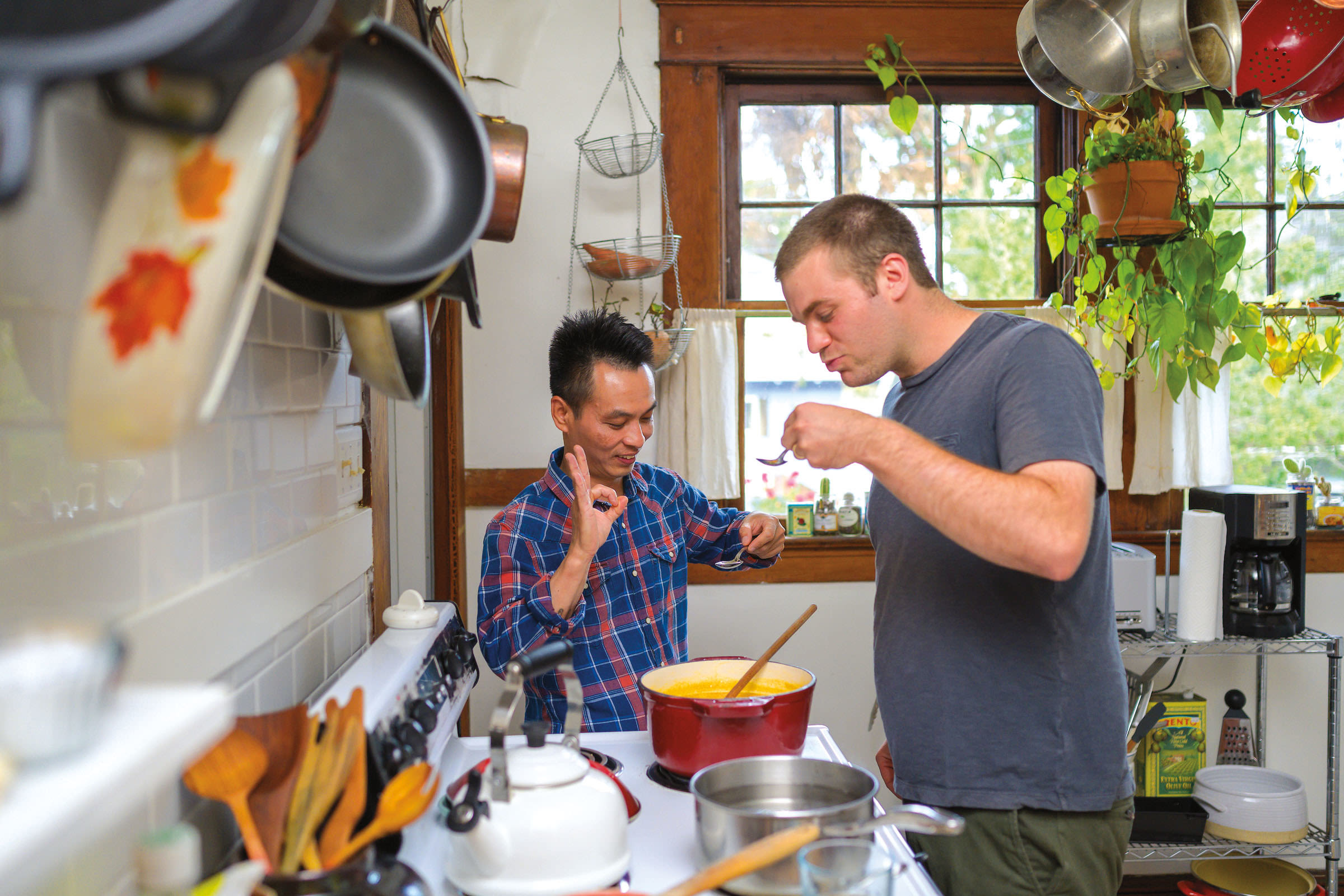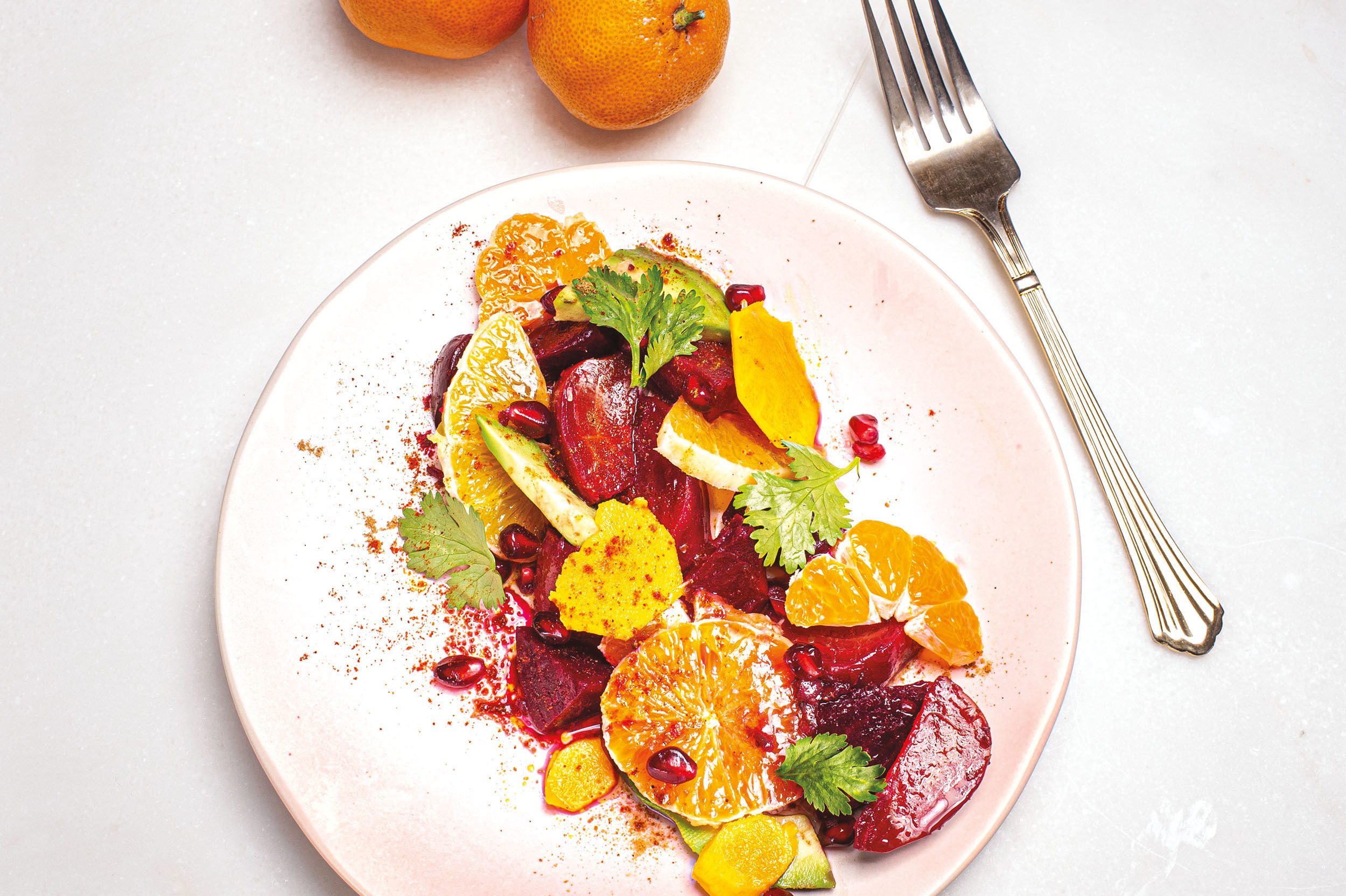Laurelhurst Market Fires Up the Grill for a Late-Summer Lamb Roast
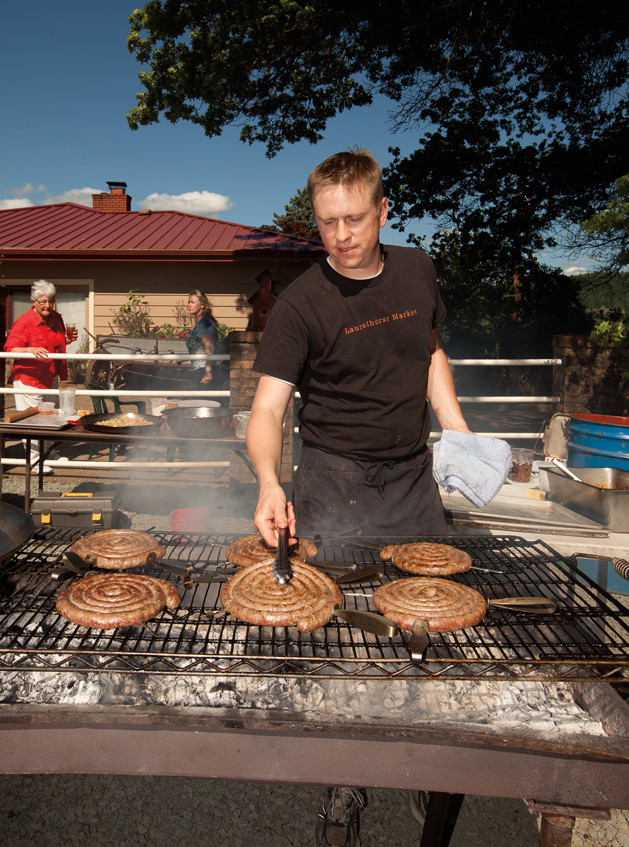
Laurelhurst Market chef David Kreifels tends his lamb Siena sausage.
Image: Stuart Mullenberg
ON A GRAVEL drive overlooking Hawley Ranch’s 3,800 acres of idyllic Cottage Grove pastures, a heavily tattooed team of thick-bearded butchers from Portland’s Laurelhurst Market toils over a white-hot grill brimming with trussed lamb legs and just-stuffed curls of Siena sausage. Nearby, rancher Bill Hoyt and his cohort of sturdy farmers twirl figure eights with a lasso, advising clusters of excitable ranchers-to-be on the finer points of wrangling a steer. For a daylong summer farm feast, this patch of gravel is a case study for the region’s fruitful cultural collisions: it’s where the meat-exacting pastoral purveyors and the urban blade-masters who elevate their well-bred flocks come together.
These unlikely tablemates have plenty to celebrate. Laurelhurst Market’s owners—David Kreifels, Jason Owens, and Benjamin Dyer—are just as critical for Hawley Ranch as Hoyt and his lambs are to the restaurant’s boutique-butchery operation. Hoyt sells about 800 lambs a year, and Laurelhurst Market typically buys one whole animal a week. Imbued with sweet ryegrasses and Persian clovers, the meat has a mellow flavor and a silken texture that garners Hoyt celebrity status among the butcher counter’s fanatically carnivorous patrons.
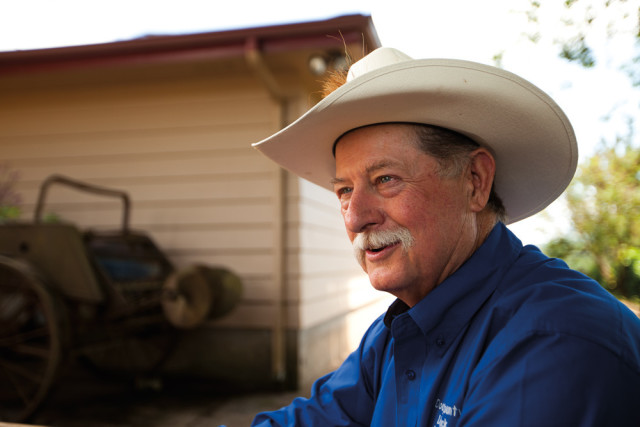
Ranch owner Bill Hoyt
Image: Stuart Mullenberg
Though he wears a silver Stetson hat now, Hoyt has worn many others over the years: he’s the fifth-generation scion to Hawley Ranch’s wooly throne; the former president of the Oregon Cattlemen’s Association; an amateur genealogist (he points to a stretch of i-5 where he swears his great-great-grandfather was chased by black bears in 1852); and, at one point, the highest-ranking scuba instructor in the Northwest. Today, he’s host to Oregon’s greatest farm feast.
For their ode to lamb cookery at Hawley Ranch, the Laurelhurst team orchestrates a menu that uses nearly every part of the animal, from shank to shoulder chuck. Glossy lamb tartare and crispy flatbreads are smeared with lamb liver mousse, braised lamb ragù is ladled over pappardelle stained orange with farm-fresh eggs, and a bloody-rare roast is sliced thin on a bed of green zucchini salad. As the setting sun silhouettes Hoyt’s fluffy flocks, chef and farmer settle in with their families and dig in raucously.
As for the rest of us, we may not have access to Hoyt’s livestock, or to Laurelhurst Market’s hand-cranked sausage stuffer—but enjoying the fruits of their collaboration is as easy as a trip to the local butcher counter.
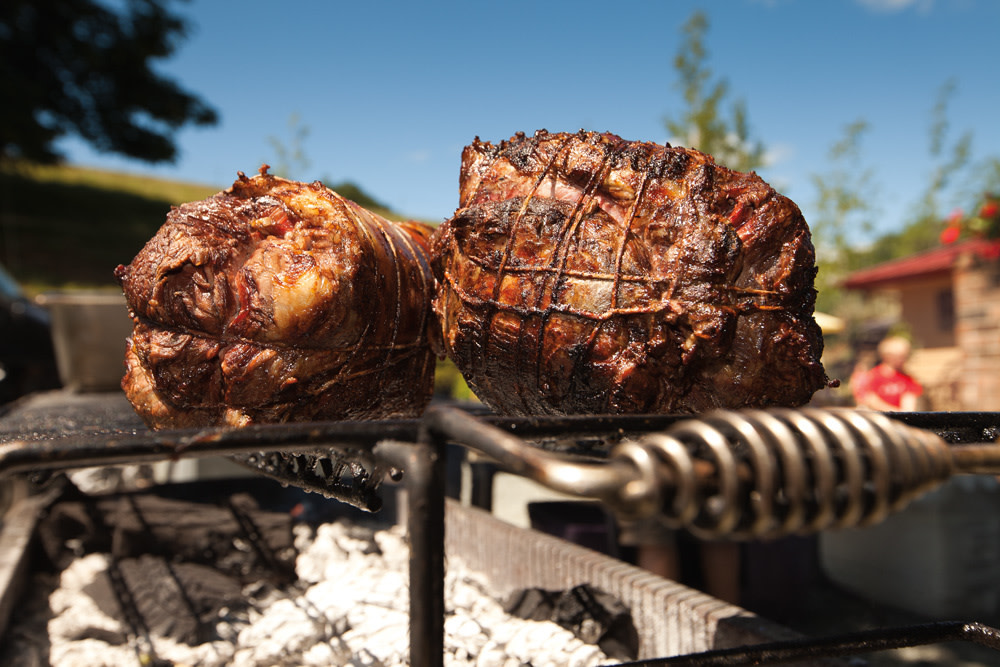
Whole legs of lamb, trussed and slow-cooked on the grill
Image: Stuart Mullenberg
Grilled Leg of Lamb
(Serves 10–12)
- 1 gallon water
- 1 yellow onion, quartered
- 10 cloves garlic, smashed
- 3 bay leaves
- 1 sprig rosemary
- 8 sprigs thyme
- 1 lemon, halved
- 1 cup salt
- ½ cup white sugar
- ½ cup balsamic vinegar
- 1 tsp chile flake
- 1 tsp fennel seed
- 1 leg of lamb (bone removed, silver skin and glands trimmed)
For the brine:
(1) CARAMELIZE lemon by heating the exposed sides either on a grill or in a dry, hot pan in the oven. (2) BRING all ingredients (except for lamb) to a boil in a large pot. (3) REMOVE from heat and let cool completely.
For the lamb:
(1) PLACE lamb into a large plastic bag or container, pour brine over top, and refrigerate overnight. (2) REMOVE lamb from brine and pat dry, letting it come to room temperature for an hour. (3) TUCK one side of the leg under the other and secure tightly with butcher’s twine several times. (4) PREPARE a charcoal grill, with a few chunks of hardwood like apple or hickory at the ready. (5) PULL the coals to one side of the grill and put the leg of lamb on the other. (6) COVER grill and turn the leg frequently, especially during the first 20 minutes, adding chunks of wood occasionally, until lamb has an internal temperature of 110 degrees (about 1.5–2 hours). (7) REMOVE from grill and let rest at room temperature for at least 30 minutes. (8) REMOVE string and slice thin.
Eggplant, Fennel, and Raisin Caponata
(Serves 10)
- ½ cup extra-virgin olive oil
- 1 large globe eggplant, sliced into thick rings
- 1 red onion, sliced into thick rings
- 1 small bulb fennel, diced small
- 1 clove garlic, smashed
- 1 medium fresh tomato, peeled, seeded, and chopped
- ¼ cup golden raisins
- 1 tbsp capers, rinsed and chopped
- 1 tsp cocoa powder
- ½ tsp rosemary, chopped
- ½ tsp chile flakes or 1 small Calabrian chile, sliced thin
- ¼ cup balsamic vinegar
- 1 tbsp pine nuts, toasted
- 2 tbsp green olives, such as picholines, pitted and halved
- 1 tbsp basil, roughly chopped
- 1 tsp preserved lemon peel, chopped or ½ tsp fresh lemon zest
- Salt and pepper
(1) OIL and season eggplant and red onion slices lightly on each side. (2) GRILL both sides until well marked and dice into ¼-inch pieces. (3) SAUTÉ fennel in olive oil over medium-high heat until it begins to caramelize. (4) ADD garlic and stir for 1 minute. (5) ADD tomato, raisins, capers, cocoa powder, rosemary, and chile flakes and cook over medium heat, until the tomato begins to break down. (6) ADD balsamic vinegar, pine nuts, olives, and diced grilled vegetables, reducing heat to a simmer and adding remaining oil. (7) COVER and cook over low heat for 25–30 minutes. (8) REMOVE from heat, stir in basil and lemon, and season with salt, pepper, and vinegar.
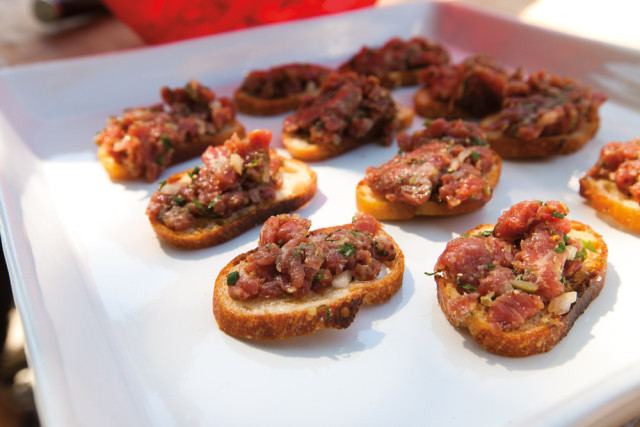
Hawley Ranch beef tartare with egg yolk
Image: Stuart Mullenberg
Grilled Flatbread
(Makes six 12-inch flatbreads)
- 4 1/3 cups all-purpose flour
- 2 tsp salt
- 1 ½ tsp dry active yeast
- 1 ½ cups hot water
- 2 tbsp extra-virgin olive oil
(1) MIX flour, salt, and yeast in a food processor fitted with the dough hook attachment. (2) ADD hot water and oil with the machine running on medium-low. (3) KNEAD dough for 12 minutes, adding a pinch of flour if dough sticks to the sides. (4) COVER dough with a dry towel in a warm place to let rise for 1 hour. (5) FOLD dough onto a floured work surface and portion into six 5-ounce balls. (6) KNEAD each ball until “windows” (tiny tears on the dough’s surface) form. (7) SET on a sheet pan and cover for a few hours, letting the dough rise a second time. (8) ROLL out each flatbread on a floured surface, stretching as thin as possible. (9) OIL flatbreads lightly with canola oil, season with salt, and place on the grill. (10) ROTATE flatbreads with tongs until they begin to bubble. (11) FLIP flatbreads and drizzle with olive oil. (12) REMOVE from grill and top with caponata (or grated pecorino
and fresh herbs).
Watch: Chef Kreifels prepare his recipe for grilled leg of lamb.
